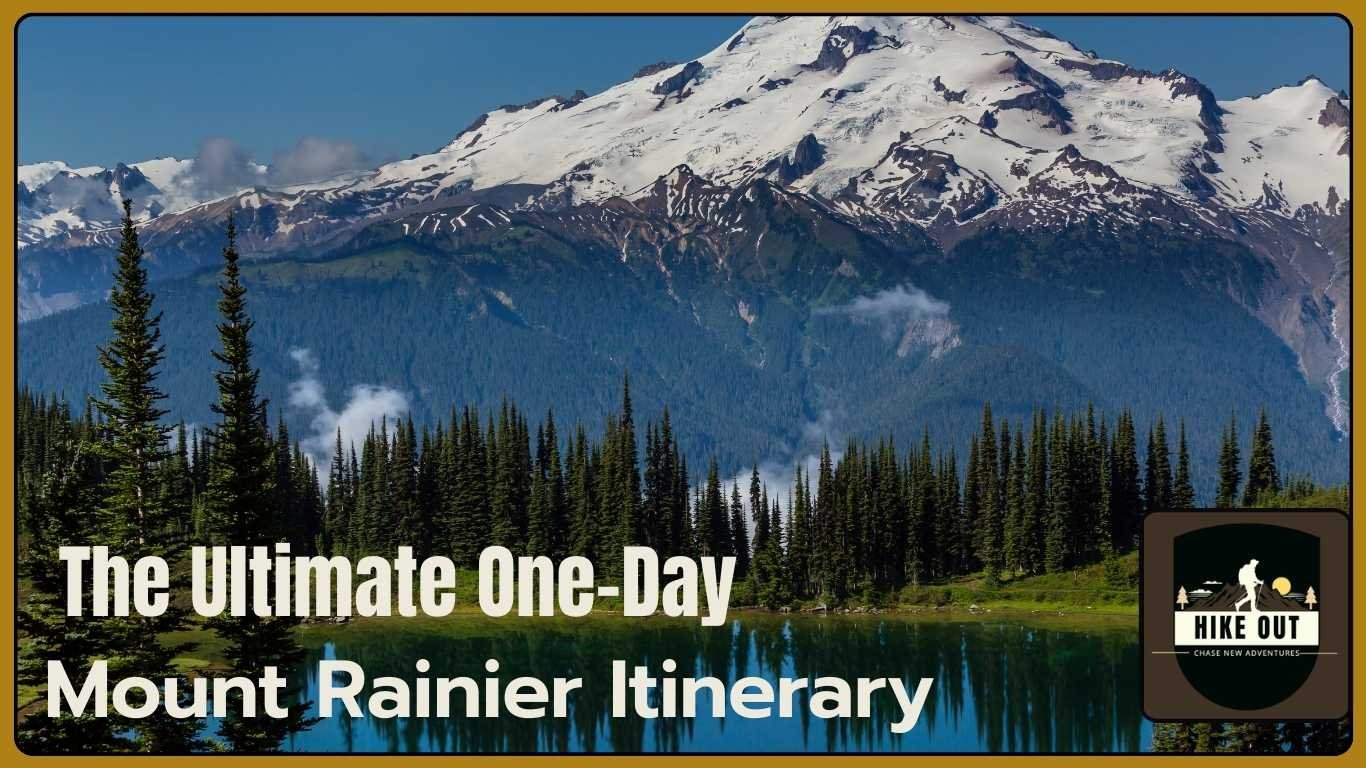Whether it’s your first visit or you’re returning for another adventure, Mount Rainier National Park offers something for everyone. From breathtaking views to exhilarating hikes, my personal journey through this stunning park has taught me the best ways to explore its wonders, and I’m excited to share them with you.
How Can You Make the Most of a Day at Mount Rainier National Park?
Short on time? You can still experience the highlights of Mount Rainier National Park. Based on my own trips, I’ll guide you through a carefully planned itinerary that ensures you capture the essence of the park in just one day.
What Are the Best Hikes for a One-Day Trip to Mount Rainier?
Pressed for time but want to take in Mount Rainier’s stunning views? The Skyline Trail in Paradise and the Mount Fremont Lookout Trail at Sunrise are must-try hikes. Both offer breathtaking panoramic views, making them perfect choices for a one-day visit.
Why Is Sunrise the Best Time to Visit Mount Rainier?
Sunrise at Mount Rainier provides the best chance to beat the crowds and experience the park in its most serene state. Enjoy peaceful views and perfect reflections at Reflection Lake and Sunrise Point, capturing the beauty of early morning light.
Quick Travel Tips for Visiting Mount Rainier in One Day
- Arrive early: Maximize your time by starting your day as early as possible.
- Check road status: Ensure the trails and viewpoints you want to visit are accessible, especially during winter or early spring.
- Pack essentials: Bring snacks, water, and weather-appropriate gear (layers are key, as temperatures vary with elevation).
Must-See Viewpoints at Mount Rainier
- Paradise: Offers sweeping views of Mount Rainier and is a top spot for wildflower viewing in the summer.
- Sunrise Point: The highest point you can drive to in Mount Rainier, providing stunning vistas.
- Tipsoo Lake: A peaceful stop to enjoy serene beauty and views of Mount Rainier.
Best Time to Visit Mount Rainier
The best time for a one-day trip to Mount Rainier is from July to September, when trails are open and the weather is most favorable. However, spring and fall offer unique experiences like wildflower blooms and fall foliage.
How to Get to Mount Rainier from Seattle or Portland
- From Seattle: It’s a 2.5-hour drive via I-5 and WA-7 to Paradise or Sunrise.
- From Portland: A 3-4 hour drive via I-5 and US-12, with a detour to Packwood for Sunrise.
Mount Rainier Itinerary for a One-Day Adventure
If you have just one day to explore, it’s crucial to plan ahead. Here’s an action-packed itinerary to help you experience the park:
- Start Early at Nisqually Entrance: Head straight to Paradise for incredible views and a few short hikes.
- Morning Hike to Reflection Lakes: After visiting the Paradise Inn, take the Reflection Lakes loop for a beautiful photo op.
- Explore Christine Falls: A short drive from Paradise, Christine Falls offers a serene waterfall framed by a stone bridge.
- Stop at Narada Falls: Continue to Narada Falls, where the water cascades dramatically down a cliff.
- Lunch at Paradise Inn: After a morning of exploring, take a break and enjoy lunch at the historic Paradise Inn.
- Afternoon Hike to Comet Falls: Head to Comet Falls, a short yet rewarding hike to a stunning 380-foot waterfall.
- End with a Visit to Fremont Lookout: Capture breathtaking panoramic views of the Cascades on the Fremont Lookout Trail.

{Discover the best one-day itinerary for Mount Rainier and explore the stunning landscapes with HikeOut Adventures.}
Must-See Spots in Mount Rainier
Mount Rainier is packed with must-see locations. These spots should be on your list:
- Reflection Lakes: Perfect for early morning shots, offering beautiful mountain reflections.
- Narada Falls: A powerful waterfall, easily accessible for stunning photography.
- Comet Falls: A challenging yet rewarding trail that leads to one of the tallest waterfalls in the park.
- Fremont Lookout: For impressive panoramic views of Mount Rainier and the surrounding Olympic Mountains.
- Tipsoo Lake: A serene alpine lake that offers spectacular views, especially at sunrise.
Best Mount Rainier Hikes for One Day
If you’re up for a hiking adventure, these trails fit perfectly into a one-day itinerary:
- Bench and Snow Lakes Trail: A 2.5-mile trail with an elevation gain of 610 feet, offering stunning views of alpine lakes.
- Rampart Ridge Loop: A 4.5-mile loop with expansive views of forests and Mount Rainier itself.
- Comet Falls Trail: A 3.8-mile hike leading to one of the tallest waterfalls in the park.
- Grove of the Patriarchs: A 1.5-mile trail offering an easy walk through a forest of ancient trees.
Things to Pack for Mount Rainier National Park
When visiting Mount Rainier, be prepared for variable weather. Here’s a quick packing list:
- Layered Clothing: Even in summer, it can get chilly in the morning or at higher elevations.
- Footwear: Sturdy hiking boots are essential for rocky and muddy trails.
- Snacks and Water: Keep your energy levels up with snacks like energy bars and hydrate with plenty of water.
- Sunscreen and Sunglasses: Protect yourself from the sun, especially at higher elevations.
- Map/GPS: Although the park is well-marked, it’s a good idea to bring a physical map or download offline maps.
- Camera Gear: Mount Rainier offers stunning vistas, so bring your camera, tripod, and extra batteries.
Where to Stay Near Mount Rainier
If you’d rather not rush back in a single day, there are several great places to stay near the park:
- National Park Inn: Located at Longmire, offering cozy rooms and easy access to nearby trails.
- Paradise Inn: Situated at Paradise, it’s ideal for lodging and dining.
- Cougar Rock Campground: A great spot for camping near Paradise with first-come, first-served sites.
- Cabins and Lodges in Ashford and Packwood: Rental cabins and lodges provide a more private, secluded option.
Leave No Trace Principles
As visitors, we must protect the environment by following these Leave No Trace principles:
- Pack out all trash, including food waste.
- Stay on durable surfaces like trails and designated campsites.
- Respect wildlife by maintaining distance and never feeding animals.
- Avoid disturbing meadows and wildflowers.
Important Park Information
- Park Entrance Fees: A 7-day pass costs $30 per vehicle, or you can purchase an America the Beautiful pass for $80, granting access to all national parks.
- Cell Service: Cell service can be spotty in remote areas. Paradise Visitor Center and Longmire have good service.
- Weather Conditions: Be prepared for sudden weather changes. Always check for road closures and weather forecasts before your visit.
Mount Rainier Photography Tips
For photography enthusiasts, Mount Rainier offers countless opportunities for breathtaking shots:
- Sunrise at Reflection Lakes: Capture the early morning light and the stunning reflection of Mount Rainier.
- Comet Falls: Use long exposure techniques to capture the beauty of the waterfall, especially after rain.
- Fremont Lookout: This spot offers amazing panoramic shots of the surrounding mountains and valleys.
Must-Visit Resources for Planning Your Perfect Mount Rainier Adventure
As you plan your visit to Mount Rainier National Park, these trusted external resources will provide you with additional insights, up-to-date trail information, and guidance on how to make the most of your adventure. Explore these valuable links to deepen your understanding of the park, enhance your hiking experience, and ensure your trip is both enjoyable and sustainable.
1. Mount Rainier National Park – Official National Park Service Website
For the most reliable and current information on Mount Rainier National Park, including trail maps, road closures, and visitor hours, visit the official National Park Service (NPS) page. This resource is essential for understanding the park’s history, wildlife, safety guidelines, and seasonal accessibility, helping you make informed decisions before your visit. It’s also the best place to check for real-time alerts on weather and trail conditions.
2. Washington Trails Association – Mount Rainier Hikes
The Washington Trails Association (WTA) is a go-to resource for detailed hiking trail information in Mount Rainier National Park. From beginner-friendly paths like the Skyline Trail to more advanced hikes, WTA offers thorough descriptions, difficulty ratings, and real-time updates on trail conditions. This resource will help you select the best trails based on your experience level, ensuring you get the most out of your one-day hiking adventure.
3. Leave No Trace Center for Outdoor Ethics – Learn More
Leave No Trace principles are crucial for preserving the natural beauty of places like Mount Rainier. The Leave No Trace Center offers invaluable guidelines to help you minimize your environmental impact while exploring the park. By following these best practices, you’ll contribute to keeping the park pristine for future generations, ensuring that Mount Rainier’s stunning landscapes remain protected.
Explore More: Must-Read Articles for Adventure Seekers
As you plan your Mount Rainier trip, don’t miss out on exploring more exciting adventures. Check out our guide on the “Seven Sisters Cliffs Walk: An Unforgettable Journey Awaits!“ for breathtaking coastal views, or get prepared for your mountain climbing adventure with our “Essential Tips for Beginner Climbers to Conquer Heights!”.
Both articles provide valuable insights to enhance your outdoor experience and help you prepare for your next journey.
Final Thoughts
Mount Rainier National Park offers a lot to explore in just one day. By following this itinerary and packing tips, you’ll maximize your time and see the very best the park has to offer. Whether you’re hiking, photographing, or simply soaking in the views, your day at Mount Rainier will surely be unforgettable.


3 thoughts on ““The Ultimate One-Day Mount Rainier Itinerary: Insider Tips””